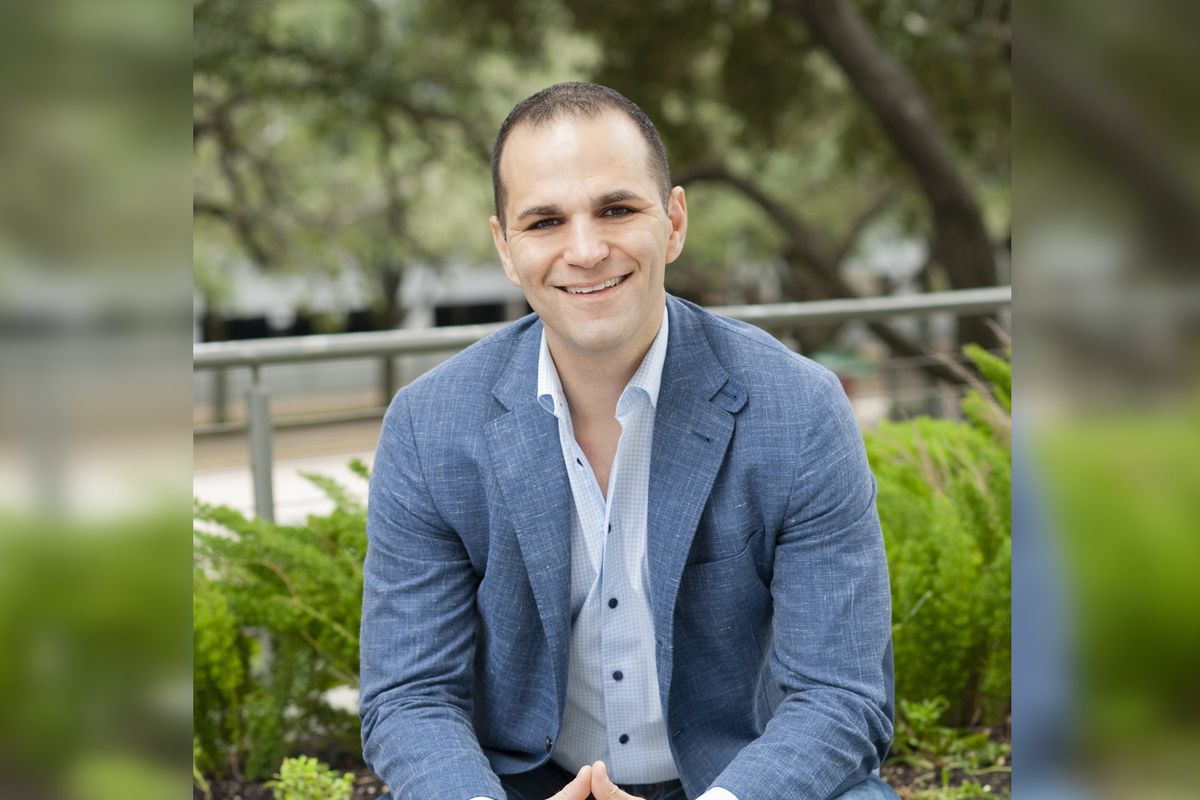Who's who: These were the top 5 Houston energy transition interviews of 2023
Editor's note: As the year comes to a close, EnergyCapital is looking back at the year's top stories in Houston energy transition. EnergyCapital launched specifically to cover the energy transition community — and that includes the people who power it. With weekly interviews, we spoke to dozens of these individuals and some resonated more than others to readers. Be sure to click through to read the full interviews or stream the podcast episode.
Kelsey Hultberg, executive vice president of corporate communications and sustainability at Sunnova Energy

Kelsey Hultberg, executive vice president of corporate communications and sustainability at Sunnova Energy, joins the Houston Innovators Podcast. Photo courtesy of Sunnova
Several years ago, Kelsey Hultberg decided to make a pivot. Looking for a role with career growth opportunities, the communications professional thought she'd find something at an oil and gas company, but then she met John Berger, founder and CEO of Sunnova, who was looking for someone to stand up their communications team amidst the solar energy company's growth.
"He hooked me," Hultberg shares on the Houston Innovators Podcast. "He said, 'I've got big plans for this company. I see where this energy industry is going, I see that we're prime for a transition, and I want to take this company public.' And I started a few weeks later."
Hultberg has been telling the story for Sunnova — which equips customers with solar and storage technology, providing them with energy independence — ever since, through scaling, new technologies, and its IPO in 2019.
PJ Popovic, CEO and founder of Rhythm Energy

Houston-based Rhythm Energy CEO and founder, PJ Popovic, discusses the landscape of Texas' energy market and how renewables should be incorporated. Photo courtesy of Rhythm
After experiencing the hottest day on record this past Fourth of July, PJ Popovic — CEO and founder of green energy retailer Rhythm Energy — explained what extreme temperatures like these mean for Texas’ energy market and the role renewables will play in addressing increased demand response.
Headquartered in Houston, Rhythm Energy launched two years ago and offers a variety of 100 percent renewable energy backed plans, from wind to solar. Popovic discussed with EnergyCapital where he thinks renewables fit into Texas’ energy consumption and grid reliability issues in an interview.
Aniruddha Sharma, co-founder and CEO of Carbon Clean

Aniruddha Sharma of Carbon Clean weighs in on his North American expansion, the impact of the Inflation Reduction Act, and more. Photo via carbonclean.com
Earlier this year, a growing carbon capture company announced its new North American headquarters in Houston. Now, the company is focused on doubling it's headcount before the end of 2023 to meet demand.
Carbon Clean, which has a technology that has captured nearly two million tons of carbon dioxide at almost 50 sites around the world, opened its new office in the Ion earlier this year. The company is now building out its local supply chain with plans to rapidly expand.
In an interview with EnergyCapital, Co-Founder, Chair, and CEO Aniruddha Sharma weighs in on the new office, how pivotal the Inflation Reduction Act has been for his company's growth, and the future of Carbon Clean.
Vibhu Sharma, founder of InnoVent Renewables

Vibhu Sharma founded InnoVent Renewables to make a sustainable impact on tire waste. Photo courtesy
With over a billion cars currently on the road — each with four tires that will eventually end up discarded, one Houstonian is hoping to create the infrastructure to sustainably dispose of tire waste now and into the future.
Announced earlier this month, Vibhu Sharma founded InnoVent Renewables to establish production facilities that utilize a proprietary continuous pyrolysis technology that is able to convert waste tires, plastics, and biomass into fuels and chemicals.
In a Q&A with EnergyCapital, Sharma explains his plans to sustainably impact the tire waste space and his vision for his company.
Cindy Taff, founder and CEO of Sage Geosystems

In a Q&A with EnergyCapital, Cindy Taff of Sage Geosystems explains why she's so optimistic about geothermal and her company's technology. Photo courtesy of Sage
Geothermal energy is an integral part of decarbonizing the energy industry, and Sage Geosystems CEO Cindy Taff believes her company's tech has what it takes to lead the way.
Founded in Houston in 2020, Sage Geosystems is focused on two business lines — energy storage and geothermal. In addition to developing these technologies, Taff says Sage has "cracked the code" on both reducing costs and maximizing electricity output. Sage has customers ranging from Nabors, the world’s largest land-based drilling company, and Virya LLC, an investor in climate ventures with high impact of eliminating global greenhouse gas emissions or sequestering CO2
In a Q&A with EnergyCapital, she explains why she's so optimistic about geothermal and her company's technology.











